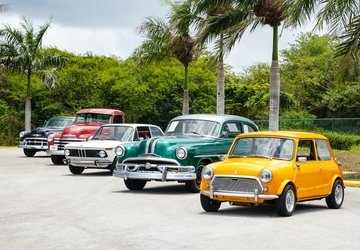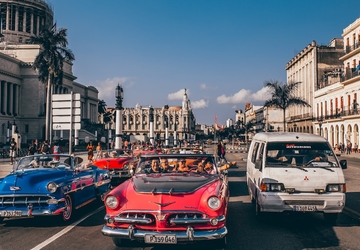Keeping vintage cars is a passion of its own, and you have to take their care more than modern cars. The parts alone make it a pretty expensive hobby. But you may not be in it for the hobby as you may be only able to afford old cars. Vintage or Old Car Insurance is the best option to avoid massive losses in case of damage or collision. Let’s discuss some of the critical things you need to know.
Most insurance providers don’t have a separate “Vintage Class Insurance” and categorize all vintage, old, and classic cars under "Classic-car Insurance." You should understand The following basic categories when insuring your Vintage cars.

Classic – Most cars in this category are highly valued, sometimes restored to be functional but aren’t older than 20 years.
Modified Collector Editions – The significant difference from the classic category is that these cars have a significant modification, such as installing a modern engine, while everything else is vintage. Most providers don’t offer insurance for such modified cars, significantly when modified for racing, as it increases the chances of getting damaged or totaled.
Replicas – These are manufactured with different parts but are copies of original vintage cars, some even older than 25 years, which fall under different categories or general ones.
Antiques – Vintage genuine cars older than 25 years are in working condition, but the age limitation varies by the insurance provider depending on which state or region they operate from.
While there are typically liabilities included like collision, medical, and other damages, Vintage insurance works on considering what you use your vintage car for, and here are some aspects based on this.
Transportation – Most insurance providers will stipulate conditions based on how much the car is used as a transportation vehicle and the added mileage limits.
Total Loss Cases – In case of Total Loss in case of an accident, you get “agreed” or “guaranteed” value in the insurance as a return. This differs from regular cars, where depreciation dramatically contributes to the final settlement.
Worldwide – This is a particular case scenario where you take your vintage car for roadshows and such. Hence, you must discuss it in detail because most only cover US or Canadian jurisdictions.
Now that you know the basic overview of how Vintage Cars insurance differs, here are the best policies you can find.
Established in 1947, Grundy insurance is becoming more popular as it operates in 50 states while providing 100% coverage based on the car’s actual value. Not just that, you can get up to $500 for spare parts as in the coverage, among other things. Don’t forget to check their BBB, Better Business Bureau A+ ratings, and see how well they treat customer complaints and issues.

They have also been in the business for quite a while, and most value them as one of the top vintage car insurance providers out there due to their 50+ years of service. You can find other types of financing there, such as muscle, street rod, replica, race, and many other cars. It is good because you can add another type of car with your vintage to get a better deal as a combo.
Like most other companies, they will do valuation first based on the model, age, ratings, etc., before they go forward with the policy, giving you enough time to work on repair if need be.
Hagerty isn’t just an insurance provider; they are a community of enthusiasts who are always there to help you maintain or modify your vintage love. They have been in the business for more than 40 years and can cover spare parts, roadside assistance, or any interruptions in their coverage. Do check their policy according to your state, as it will vary, plus they only cover vehicles older than 1979.
Hagerty is also well known for covering unique products and restoration projects being the top. They cover many other services but be forewarned that if it is your daily driver, they don’t offer insurance, so you might have to look elsewhere for it.
They are also best for restoration projects because it takes time and effort to make a vintage car fully functional if this is the first time it is being restored. Because of that, you might be stuck in the middle of nowhere if it breaks down, and American Collectors cover that. It is particularly striking for vintage car owners who take them to roadshows and festivals often because, in some cases, they even cover hotel charges. So, a superb insurance provider if you love having, owning, or showing off a vintage car.
The only insurance provider on our list that caters to enthusiasts who like to take their vintage car daily as their daily driver as they provide two mileage coverage.
The first is daily drivers offering 10,000 miles a year without restrictions on how much you can drive maximum daily.
The 2nd category is more limited for those who don’t use it too often, so the limit is halved per year but has a daily restriction of 27 miles. So make sure which one you fall in and get it accordingly.
The main downside to Safeco is that they only consider vintage more than ten years old if it is a limited production vehicle and typically a modern classic. For antique cars, it is much higher. They must be over 25 years old to be covered in the coverage, and no kit, racing, or unrestored cars are allowed.
We have covered a lot in this article, and it will give you a good start in choosing your lovely and precious vintage car or collection. It is always good to research well before knowing all your pain points and what different providers can offer. Happy driving in your vintage cars and get the best insurance and care for them that they deserve.